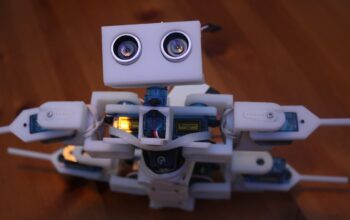Embracing a New Digital Era
Digital transformation isn’t just a buzzword anymore—it’s the engine driving some of the biggest shifts in how businesses operate today. From the way products move around the world to how companies handle data and protect their customers, change is everywhere. Let’s unpack the latest trends with clear examples you can relate to.
Supply Chains Get a Digital Makeover
If you’ve ever noticed delays in getting goods — whether it’s your favorite gadget or food staples — blame it partially on supply chains facing unprecedented challenges. Tariffs, pandemics, and geopolitical shifts have made global supply routes complex and fragile. To cope, companies are rushing to digitally transform their supply chains to avoid disruptions.
Think of supply chains like a huge orchestra. Without a digital conductor, every instrument risks playing out of sync. Moving to digital tracking, AI forecasting, and real-time visibility tools helps companies respond faster to hiccups and keep the music flowing smoothly.
AI: Not Just Sci-Fi, but Everyday Business Boost
Artificial intelligence isn’t just something from futuristic movies — it’s rapidly becoming a day-to-day business tool across industries. An insightful study shows 77% of businesses have adjusted their digital strategies to include AI, emphasizing its critical role.
Instead of fearing robots taking over, companies are empowering employees with AI to handle repetitive tasks, freeing humans for creative and strategic work. For instance:
- Sales teams use AI to prioritize leads, so they spend more time closing deals.
- Customer service employs AI chatbots to manage simple requests, letting agents focus on complex cases.
- Finance departments automate invoicing and forecasting, cutting down errors and saving time.
This kind of AI is like a helpful assistant that lets people shine in what they do best.
Blockchain Steps Into the Spotlight
Beyond AI, blockchain technology is making waves, especially in financial services and digital assets. Wyoming’s rollout of a state-backed stable token is a real-world example highlighting blockchain’s maturity. This token is fully backed by cash and US Treasuries, aiming to bring trust and security to digital currencies.
At the same time, regulators like New York’s Attorney General are calling for stronger federal laws to oversee cryptocurrencies and protect investors from scams. Meanwhile, partnerships like Mastercard teaming up with crypto exchange Kraken to issue crypto debit cards prove that blockchain and digital currencies are moving closer to everyday use.
Marketing Meets the New Attention Economy
In a world full of distractions, advertisers are rethinking how to reach consumers. Weirdly enough, research shows consumers distracted by multiple stimuli might actually remember mobile ads better, flipping old ideas about attention on their head.
This insight helps companies place smarter ads in noisy, dynamic environments like sports events or concerts—less is more, but better-timed disruptions can boost brand recall.
Balancing Innovation and Responsibility
Platforms like Instagram are leveraging AI not only to innovate but also to protect vulnerable users such as teens by automatically applying safety settings. This signals a shift—tech companies adopting AI responsibly to build trust and meet regulatory expectations, while making digital spaces safer.
Bottom Line: Digital Transformation Means Practical Progress
From refining global supply chains through real-time data, integrating AI to amplify workers’ productivity, to blockchain’s tangible steps toward secure digital finance—all these are real-world stories of digital transformation in action.
Embracing these changes is less about flashy tech and more about practical moves that make businesses more agile, secure, and customer-focused.
So next time someone mentions digital transformation, remember it’s not just tech talk—it’s about rethinking business to work smarter in a fast-changing world.
Key Takeaways:
- Supply chains rely increasingly on digital tools to navigate complexity and disruptions.
- AI boosts efficiency by automating routine tasks and supporting human creativity.
- Blockchain-based stable tokens demonstrate growing trust and regulation in digital finance.
- Marketers are leveraging new insights about consumer distraction to optimize ad impact.
- Responsible AI use on social platforms enhances safety and builds user trust.
Digital transformation is a journey filled with challenges but full of potential to reshape how we live and work.
References:
- https://www.fastcompany.com/91322945/supply-chains-require-digital-transformation
- https://www.processexcellencenetwork.com/digital-transformation/news/digital-transformation-cost-10-million-37-percent-fail
- https://www.dlapiper.com/en-la/insights/publications/blockchain-and-digital-assets-news-and-trends/2025/blockchain-and-digital-assets-news-and-trends-april-2025
- https://www.techuk.org/resource/ai-powered-success-why-digital-first-businesses-win.html
- https://www.shrm.org/enterprise-solutions/insights/other-tomorrowist-trends-news-april-24-2025
- https://en.wikipedia.org/wiki/Generative_artificial_intelligence
- https://www.pymnts.com/smbs/2025/this-week-in-b2b-smb-innovation-trade-disruptions-shape-new-digital-economy/
- https://www.owens.edu/news-releases/



